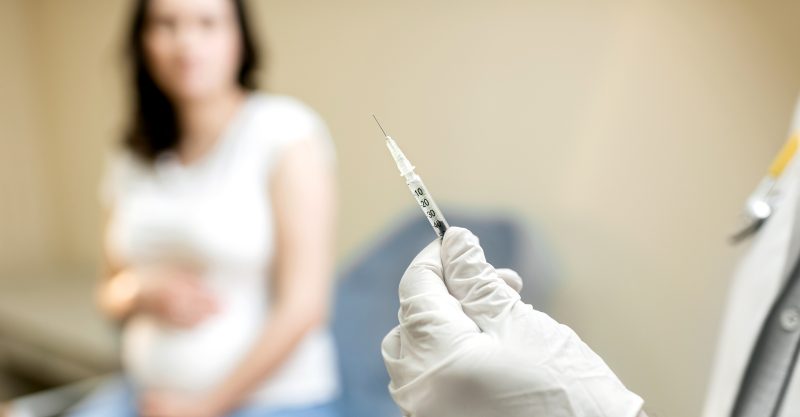Miss a day, miss a lot. Subscribe to The Defender's Top News of the Day. It's free.
None of the three manufacturers of the COVID vaccines being administered in the U.S. — Pfizer, Moderna and Johnson & Johnson — completed clinical trials on pregnant women as a part of their Emergency Use Authorization applications to the U.S. Food and Drug Administration (FDA).
In its application to the FDA for full approval — which was granted Monday — Pfizer said its “available data” on its vaccine was “insufficient to inform vaccine-associated risks in pregnancy.”
Yet the Centers for Disease Control and Prevention (CDC) nevertheless recommends pregnant women get the vaccines — a recommendation the agency reaffirmed Aug. 11, based on the yet-to-be-peer-reviewed research paper — “Receipt of mRNA COVID-19 vaccines preconception and during pregnancy and risk of self-reported spontaneous abortions, CDC v-safe COVID-19 Vaccine Pregnancy Registry 2020-21.”
The paper’s authors, Zauche et al., found that in a group of 2,456 pregnant women, 14.1% miscarried during 6 to 19 weeks of gestation. This is the duration of time where such a miscarriage is medically termed a “spontaneous abortion.”
This compares to a U.S. average of spontaneous abortion between 10 to 20% for a similar timeframe.
It is at a minimum curious that the CDC would make vaccination policy recommendations based on an unreviewed manuscript. Typically, such a paper would be reviewed for scientific rigor and methodology by the authors’ research peers, and then published in a reputable, internationally recognized journal prior to such a recommendation.
It is also not clear this manuscript would withstand the rigors of peer review given that 89% of the study cohort consisted of medical professionals. This is certainly not a representative sample of U.S. women, as one would imagine that access to healthcare, including prenatal check-ups, would be much greater in the study sample than in the general population.
The study also did not account for 65 individuals who were unable to be contacted after initial enrollment in the cohort, nor did it account for 35 cases of pregnancy loss prior to six weeks gestation.
The Zauche et al. manuscript was based on the CDC’s V-safe database, which the public cannot access. CDC officials have rebuffed attempts to gain access to the database via the Freedom of Information Act, claiming privacy concerns of the database participants.
The public does have access to the CDC’s Vaccine Adverse Events Reporting System (VAERS) database, and The Defender reports each week on those numbers as they relate to COVID vaccines.
As of Aug. 13, there were 1,175 reports of spontaneous abortion to VAERS with an average maternal age of 33.5 years. Of those miscarriages, VAERS data show 16.5% occurred within 24 hours of vaccination, 23.4% within 48 hours of vaccination and 37.1% within 7 days of vaccination.
Of the reports of miscarriages, about twice the number occurred following the Pfizer vaccine than the Moderna and Janssen (Johnson & Johnson) vaccines combined.
Unfortunately, adverse events on the VAERS database are woefully underreported, making it impossible to make a direct comparison with the Zauche et al. (2021) data.
Despite similarities to background rates provided by Zauche et al. (2021) — which we cannot independently verify — the CDC does not allow for temporality to the vaccine as a criteria to consider in determining causation.
According to the Bradford Hill criteria, “temporality is perhaps the only criterion which epidemiologists universally agree is essential to causal inference.”
Moreover, many of the miscarriage cases reported (some are testimonial) in VAERS, tell heartbreaking stories of loss and sadness, of mothers losing their babies within hours of taking the vaccine.
There is no evidence any of these reports were investigated, as the CDC suggests, and similar to other reports of serious side effects, they are swept under the same dubiously arrived at, background-rate rug.
The CDC can and should do better. With such shoddy research, the American public is left in doubt yet again as to the true story, and are even more hesitant to risk the health of their unborn babies until further, more reliable research can be shown.








